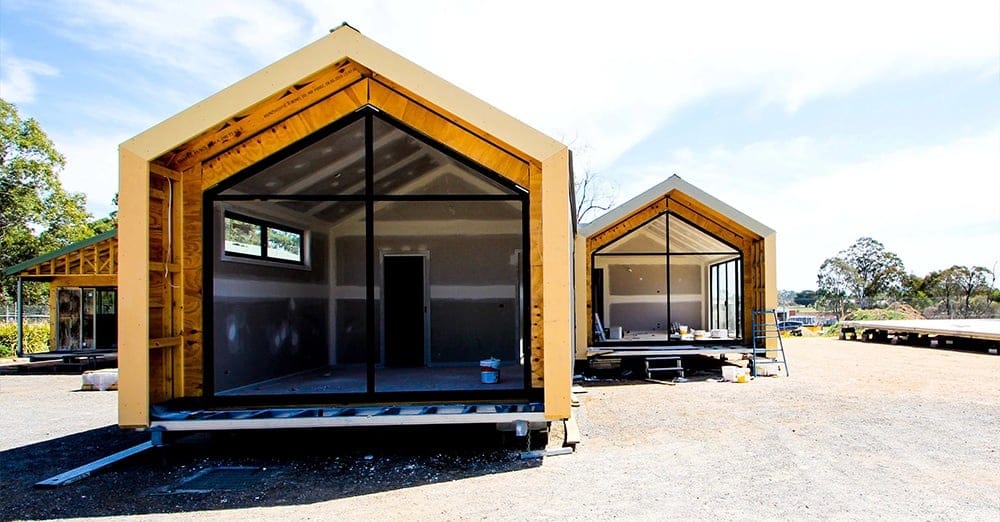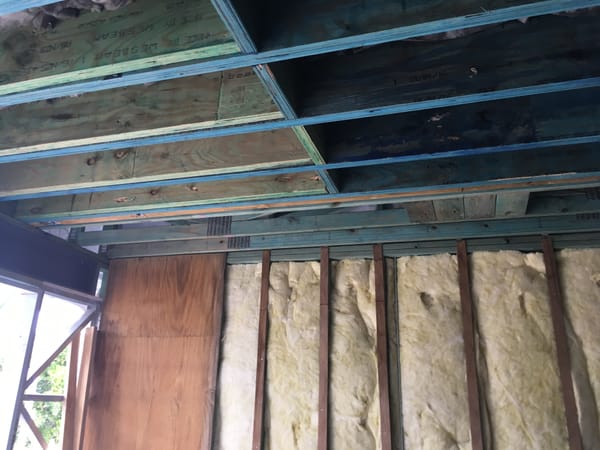Introduction
Buying a home is one of the most significant financial decisions you'll ever make. If you're a prospective new homeowner, you might be wondering whether you should invest in real estate or buy a new construction home. Both options have their own set of advantages and challenges, and understanding these can help you make a well-informed decision.
In this article, we'll explore the key considerations of investing in real estate versus buying a new construction home. We'll discuss the pros and cons of each option, the financial implications, and the potential challenges you might face. By the end, you'll have a clearer idea of which path might be the best for you.
Investing in Real Estate: An Overview
Investing in real estate is a popular way to build wealth and generate passive income. When you invest in real estate, you purchase properties with the expectation that their value will increase over time, allowing you to sell them for a profit or rent them out for steady income. Real estate investments can take several forms, including rental properties, commercial properties, and real estate investment trusts (REITs).
Types of Real Estate Investments
- Rental Properties: Purchasing residential or commercial properties to rent out to tenants. This can provide a steady stream of income and potential tax benefits.
- Commercial Properties: Investing in office buildings, retail spaces, or industrial properties. These often have longer lease terms and higher rental yields but can require more significant capital and management expertise.
- Real Estate Investment Trusts (REITs): Investing in publicly traded companies that own, operate, or finance income-producing real estate. REITs offer a more liquid and diversified way to invest in real estate without the need to manage properties directly.
General Considerations
- Market Research: Understanding the real estate market is imperative. This includes looking at market trends, sentiment, property values, and rental demand.
- Financial Planning: Assessing your budget, financing options, and potential return on investment. This involves calculating the costs of purchasing, maintaining, and potentially selling the property.
- Risk Assessment: Real estate investments carry risks, including market volatility, property damage, and tenant issues. It's essential to evaluate these risks and plan accordingly.
Investing in real estate can be a lucrative way to grow your wealth, but it requires careful planning, market knowledge, and financial stability.
Buying a New Construction Home
Buying a new construction home means purchasing a house that has just been built or is in the process of being built. This option offers several unique benefits, including modern amenities, energy efficiency, and the ability to customise certain features.
Benefits of Purchasing a New Construction Home
- Modern Amenities: New homes often come with the latest appliances, smart home technology, and contemporary design elements that may not be present in older homes.
- Energy Efficiency: New construction homes are built with energy-efficient materials and systems, which can lead to lower utility bills and a smaller environmental footprint.
- Customisation Options: Many builders offer customisation options, allowing you to choose finishes, fixtures, and layouts that suit your preferences and needs.
Considerations
- Initial Costs: The purchase price of a new construction home can be higher than that of an older home due to the premium for modern features and new materials.
- Time to Build: Depending on the stage of construction when you buy, you may need to wait several months before the home is move-in ready.
- Potential Challenges: The construction process can sometimes face delays due to weather, supply chain issues, or labour shortages.
Buying a new construction home provides the advantage of moving into a brand-new space tailored to your liking but requires patience and sometimes a higher initial investment.
Pros and Cons of Investing in Real Estate
Investing in real estate has its set of advantages and disadvantages. Understanding these can help you decide if this path aligns with your financial goals.
Advantages of Real Estate Investment
- Potential for High Returns: Real estate can appreciate over time, offering substantial returns when you sell. Rental properties can provide steady monthly income.
- Passive Income: Rental properties generate passive income, which can be particularly beneficial for long-term financial planning.
- Tax Benefits: Real estate investors can benefit from various tax deductions, including mortgage interest, property taxes, and depreciation.
- Diversification: Adding real estate to your investment portfolio can diversify your assets, reducing overall risk.
Disadvantages of Real Estate Investment
- Market Volatility: Real estate markets can fluctuate, and property values can decrease, leading to potential losses.
- Property Management: Managing rental properties can be time-consuming and may require dealing with tenant issues, repairs, and maintenance.
- Upfront Costs: Purchasing real estate requires significant upfront capital for the down payment, closing costs, and potential renovations.
- Liquidity: Real estate is not as liquid as other investments like stocks; selling a property can take time and incur additional costs.
Historical Performance
- USA: Over the past 30 years, real estate investments in the USA have generally shown positive returns, with average annual appreciation rates of around 3-5%, depending on the location and market conditions.
- Australia: Similarly, Australian real estate has experienced steady growth, with average annual returns of 4-6%. Major cities like Sydney and Melbourne have seen even higher appreciation rates.
Pros and Cons of Buying a New Construction Home
Buying a new construction home offers a different set of benefits and challenges compared to investing in real estate.
Advantages of Buying a New Construction Home
- Brand-New Features: Enjoy modern appliances, energy-efficient systems, and contemporary design that require less maintenance.
- Less Maintenance: New homes are less likely to have immediate repair needs, saving you time and money.
- Peace of Mind: Moving into a home with no previous owners means everything is new and under warranty, reducing the worry of hidden issues.
- Energy Efficiency: Modern building materials and energy-efficient appliances can lead to lower utility bills and a smaller environmental footprint.
Labour
- Higher Initial Costs: New homes often come at a premium price due to their newness and modern features.
- Longer Waiting Period: If the home is not yet complete, you may face a waiting period before moving in, which can be inconvenient.
- Potential for Construction Delays: Delays due to weather, supply chain issues, or labor shortages can push back your move-in date.
Challenges of Each Option
Challenges of Investing in Real Estate
- Finding the Right Property: Identifying a property that will yield a good return requires extensive market research and due diligence.
- Managing Tenants: Handling tenant issues, rent collection, and property maintenance can be time-consuming and stressful.
- Dealing with Repairs: Properties require ongoing maintenance and repairs, which can be costly and unexpected.
Challenges of Buying a New Construction Home
- Navigating the Construction Process: Understanding the construction process and ensuring the builder meets deadlines and quality standards can be challenging.
- Dealing with Contractors: Coordinating with contractors and resolving any issues that arise during construction requires time and effort.
- Ensuring Compliance with Building Codes: Making sure the construction adheres to local building codes and regulations is crucial to avoid future problems.
Financial Considerations
Time Use of Money
- Investment Returns: Compare the potential returns from real estate investments with the savings from owning a new construction home.
- Renting Costs: Consider the costs of renting temporary housing while waiting for a new home to be built versus potential rental income from an investment property.
Costs of Renting While You Invest
- Temporary housing can be costly, but it might be necessary if you sell your current home before the new one is ready.
- Weighing these costs against the potential rental income and property appreciation is essential for a comprehensive financial plan.
Tax Benefits for Primary Residence
- In the USA and Australia, living in your primary residence for a defined period can provide significant tax-free returns on capital gains.
- Understanding these tax benefits can influence your decision between investing and buying a new home.
Negative Gearing Explained
What is Negative Gearing?
- Definition: Negative gearing occurs when the income generated from a rental property is less than the expenses of owning and managing the property, resulting in a net loss.
- Benefits: This loss can be used to reduce taxable income, potentially leading to tax savings.
Is Negative Gearing Suitable for New Investors?
- Benefits: Negative gearing can be beneficial for investors looking to offset their taxable income, but it requires careful financial planning and risk assessment.
- Risks: The strategy relies on property appreciation and future income, which can be uncertain. New investors need to consider their financial stability and market conditions.
The performance of ETFs vs real estate in the Australian marketplace
When comparing the performance of ETFs to real estate in the Australian market, several factors need to be considered, including returns, liquidity, and risk.
Performance of ETFs
Exchange-Traded Funds (ETFs) have become increasingly popular in Australia, offering a range of investment options with different focuses. Some of the top-performing ETFs in 2024 include the Vanguard Australian Property Securities Index ETF (VAP), which tracks the S&P/ASX 300 A-REIT Index, offering exposure to the domestic listed property sector. VAP has shown good returns, with a one-year total return of 23.44%, a three-year annualised return of 5.37%, and a five-year annualised return of 4.45%.
Performance of Real Estate
The Australian real estate market has also demonstrated strong performance over the long term. Historically, real estate investments in major cities like Sydney and Melbourne have seen significant appreciation. Over the past 30 years, Australian real estate has shown average annual returns of 4-6%, with some urban areas experiencing even higher growth rates.
Liquidity and Costs
ETFs offer superior liquidity compared to direct real estate investments. ETFs can be traded on the stock market, providing flexibility to investors to buy and sell quickly. For example, VAP has high liquidity, trading over $5 million in average daily volume. In contrast, real estate transactions can take weeks or months to finalise, making them less liquid.
In terms of costs, ETFs generally have lower upfront costs and ongoing management fees compared to the costs associated with buying and maintaining real estate properties. Management fees for property ETFs like VAP are around 0.23% per year, while real estate transactions involve significant costs, including stamp duty, legal fees, and maintenance expenses.
Conclusion
Investing in real estate and buying a new construction home each have their unique advantages and challenges. Your decision should be based on your financial goals, risk tolerance, and personal preferences. Whether you seek the potential high returns and passive income from real estate investments or the modern amenities and peace of mind of a new construction home, understanding these factors will help you make an informed choice. Conduct thorough research, seek professional advice, and consider your long-term plans to determine the best path for you.
FAQs
- What are the key benefits of investing in real estate?
- Potential for high returns, passive income, and tax benefits.
- What should I consider when buying a new construction home?
- Initial costs, energy efficiency, customisation options, and potential construction delays.
- How do I choose between investing in real estate and buying a new construction home?
- Consider your financial goals, risk tolerance, and personal preferences.
- What is negative gearing, and how does it work?
- Negative gearing involves deducting losses from rental property expenses against other income to reduce taxable income.
- Are there tax benefits for living in my primary residence?
- Yes, in both the USA and Australia, there are significant tax-free returns on capital gains if you live in your home for a defined period.
- What are the challenges of managing rental properties?
- Dealing with tenants, handling repairs, and ongoing maintenance.
- What are the advantages of a new construction home?
- Modern features, less maintenance, peace of mind, and energy efficiency.
- How can I assess the real estate market for investment?
- Conduct thorough market research, analyse property values, and consider rental demand.
- What are the potential risks of real estate investment?
- Market volatility, property management challenges, and liquidity issues, market sentiment, interest rate rises.
- How do historical returns compare between the USA and Australia?
- Both countries have shown positive returns over the past 30 years, with average annual appreciation rates of 3-5% in the USA and 4-6% in Australia.
Further Reading












